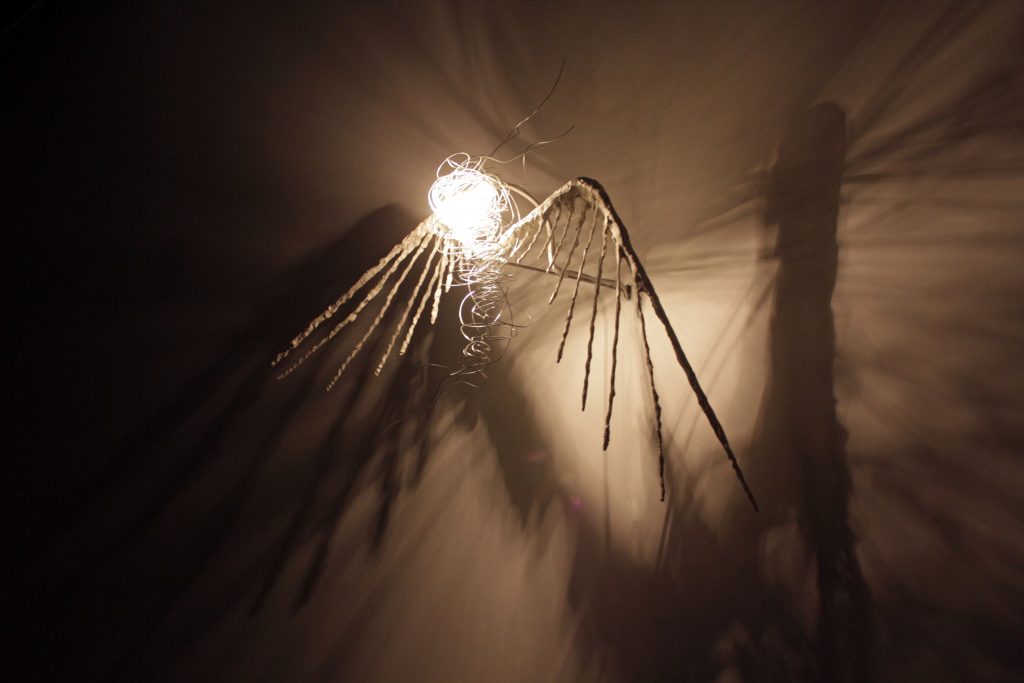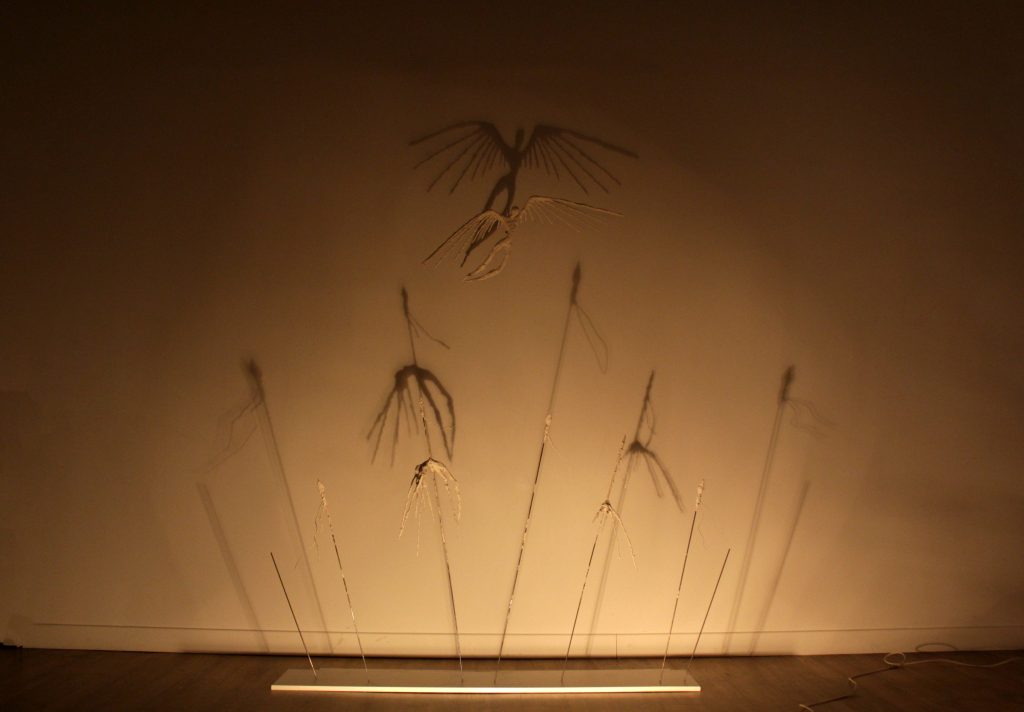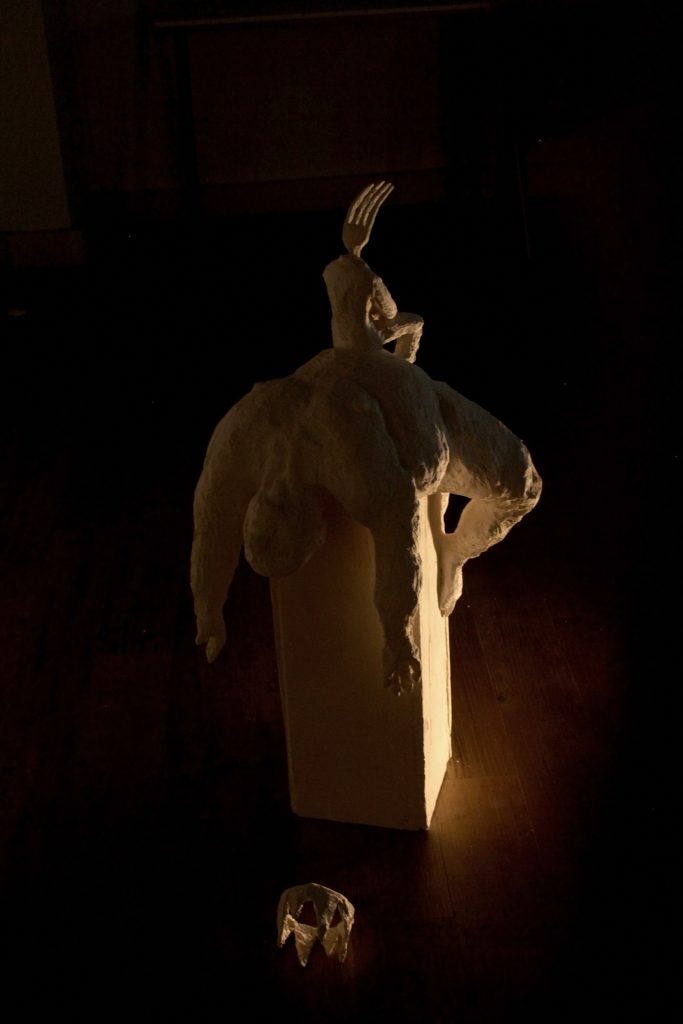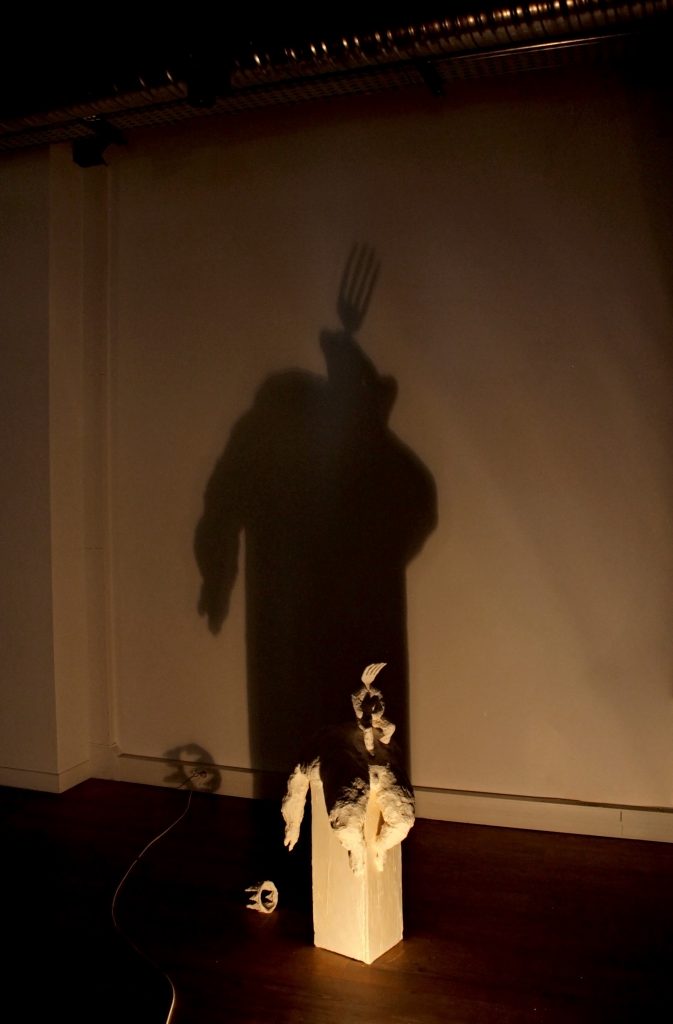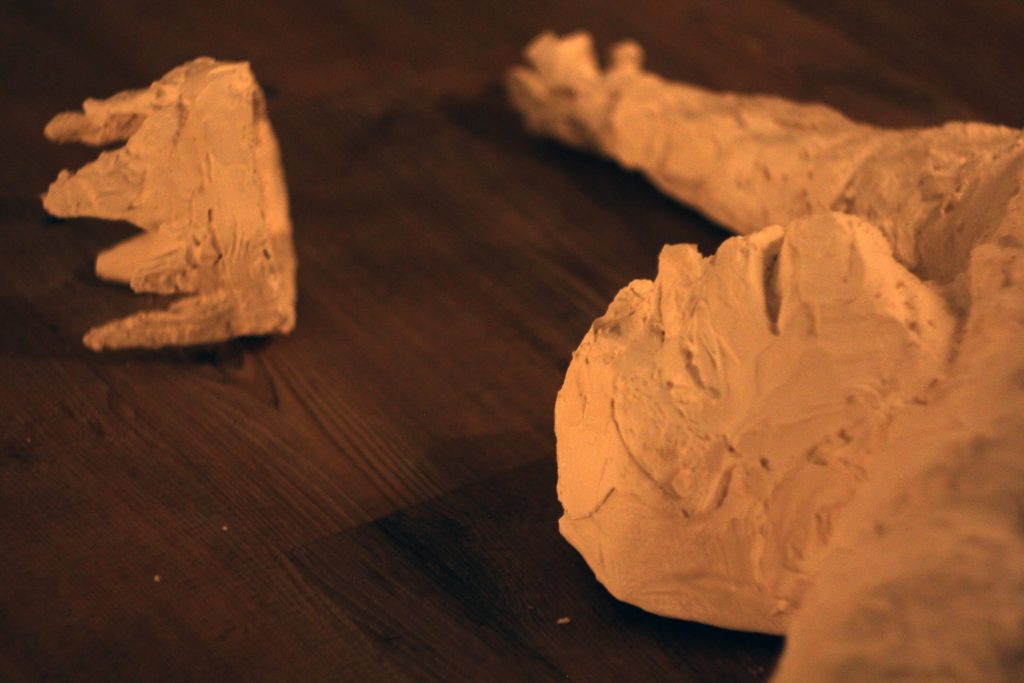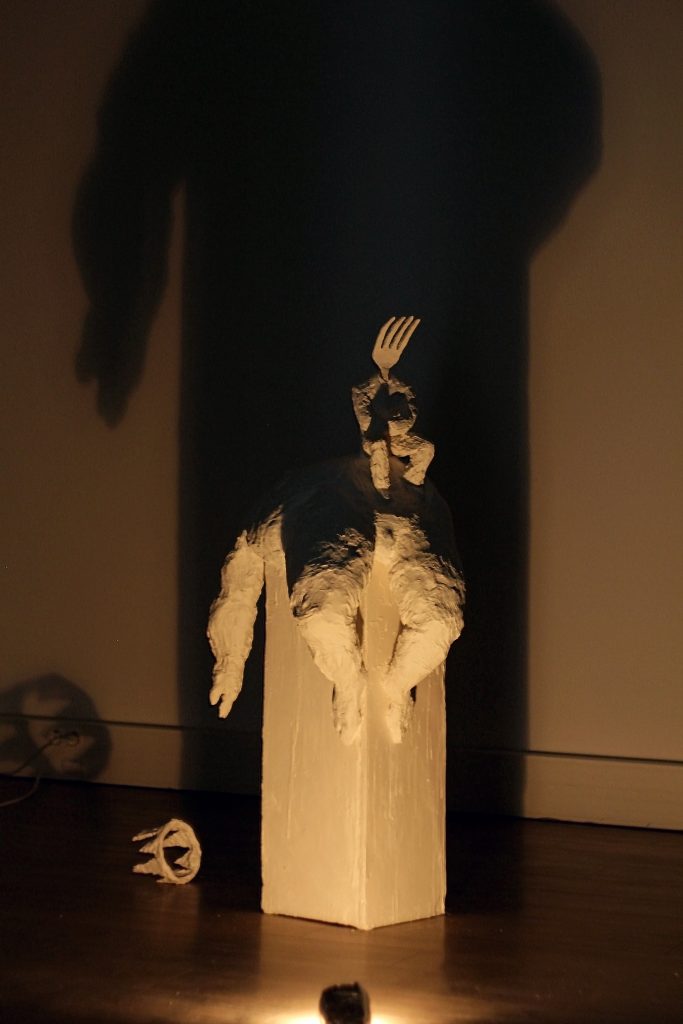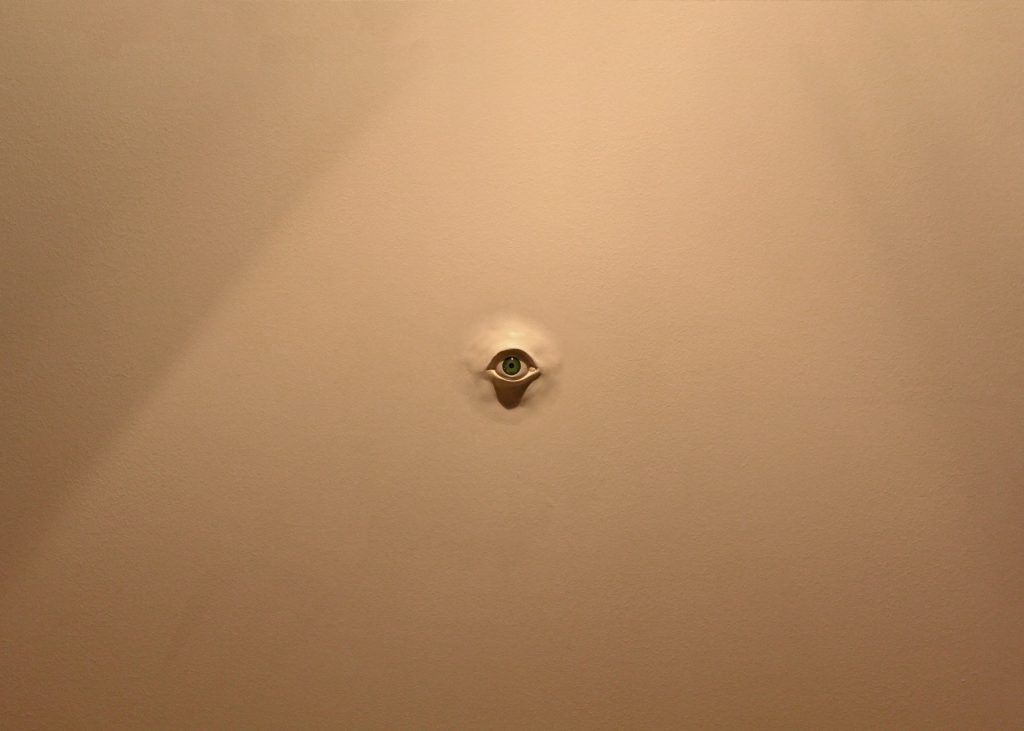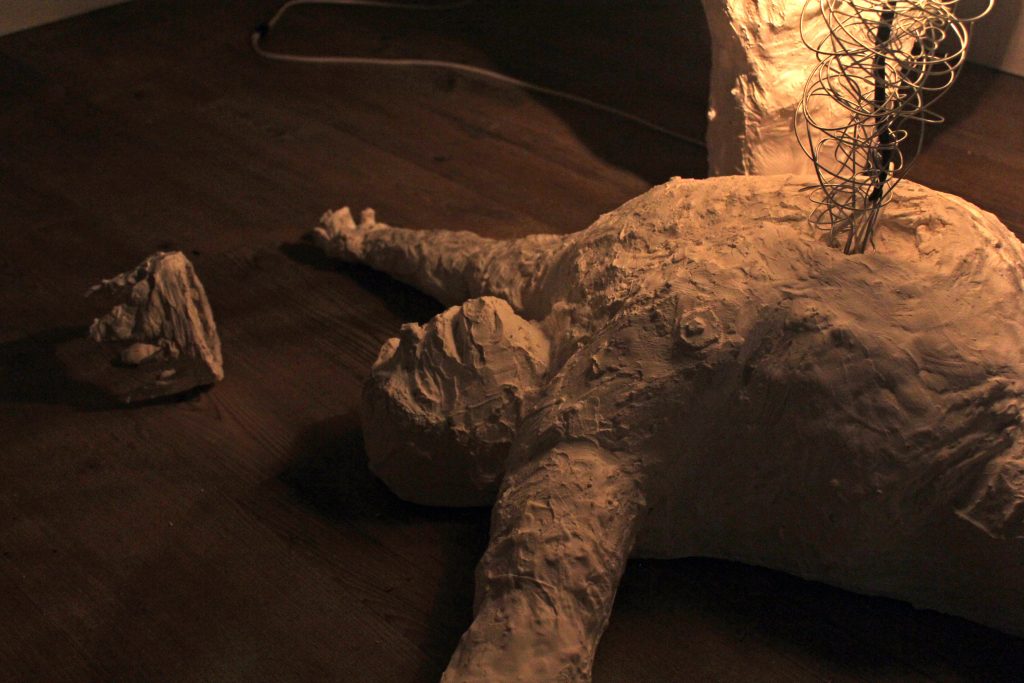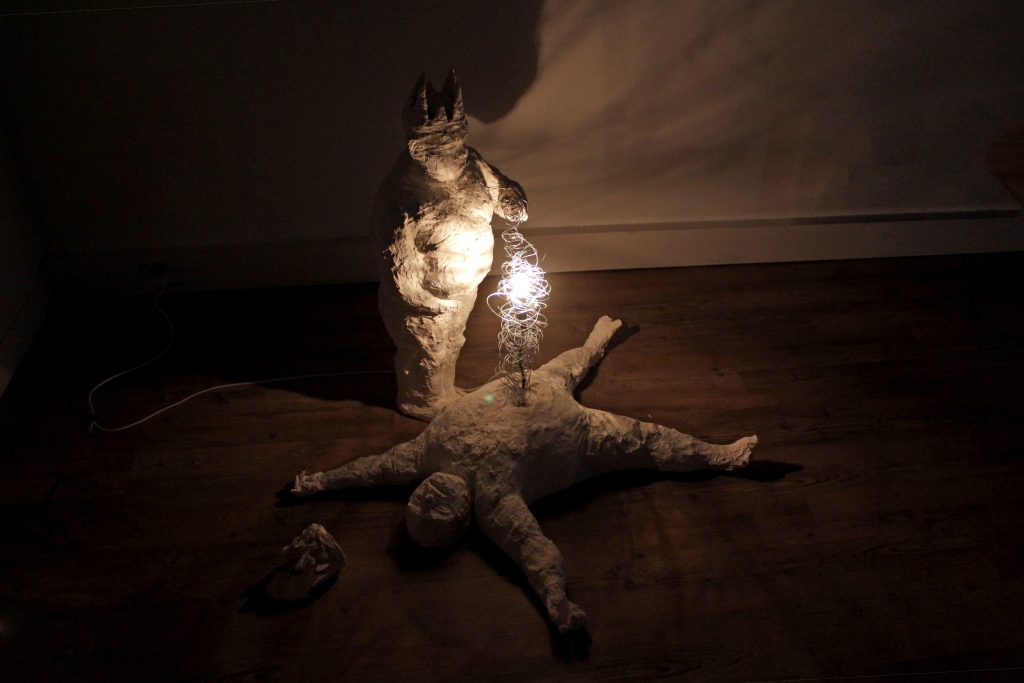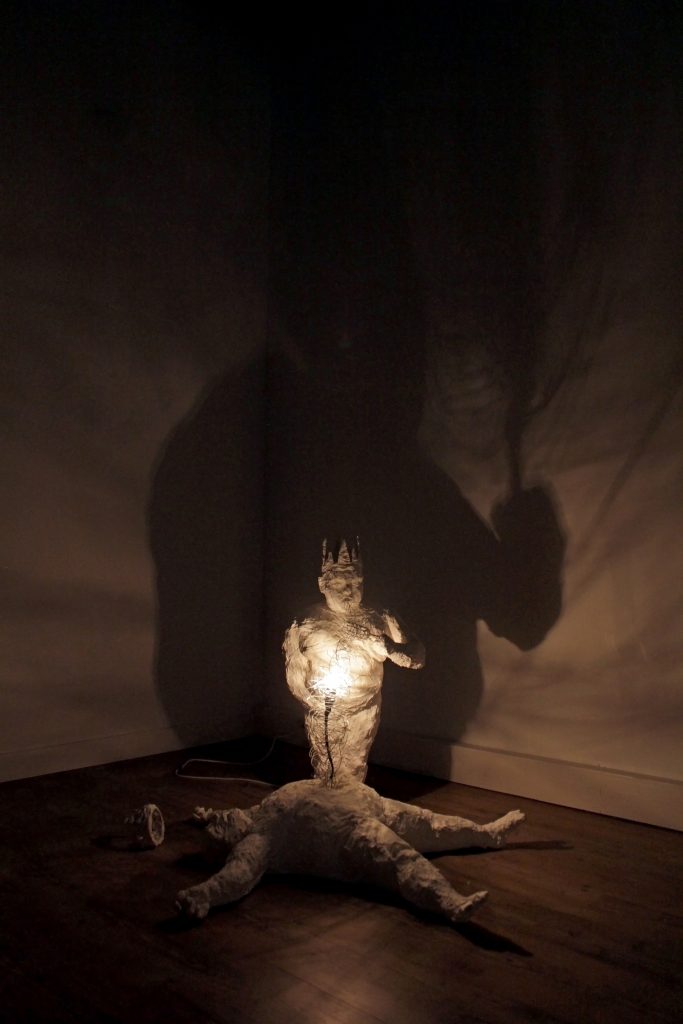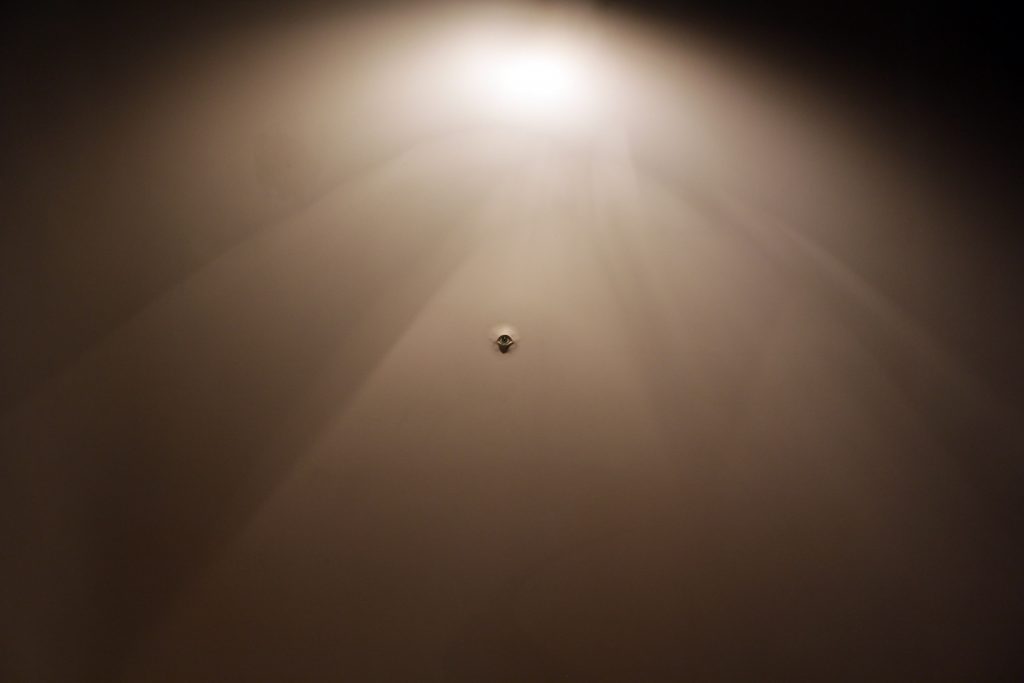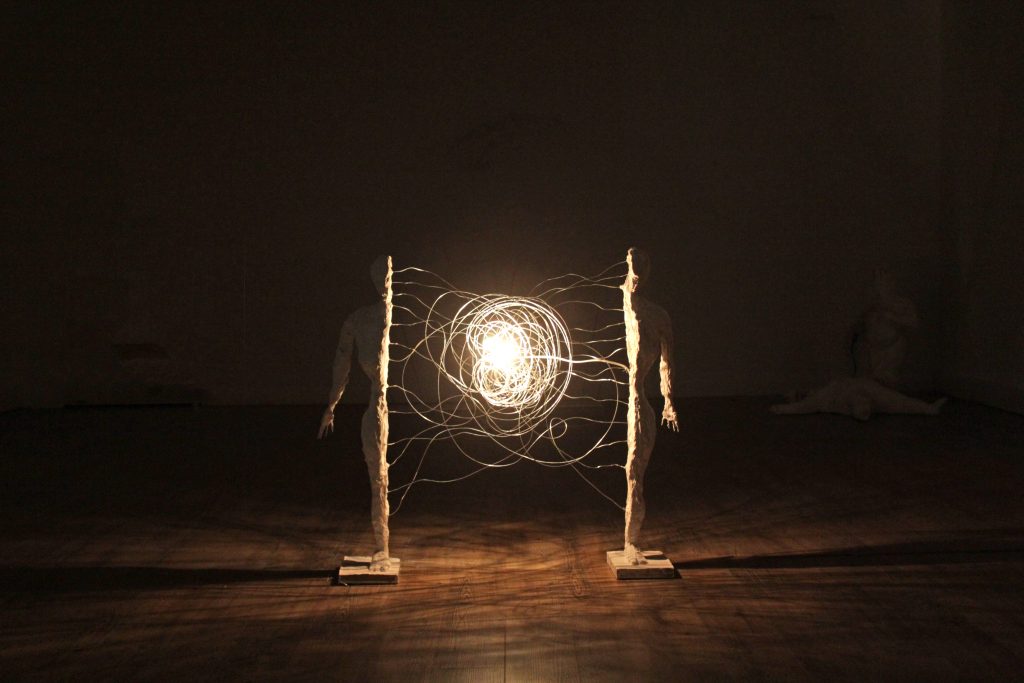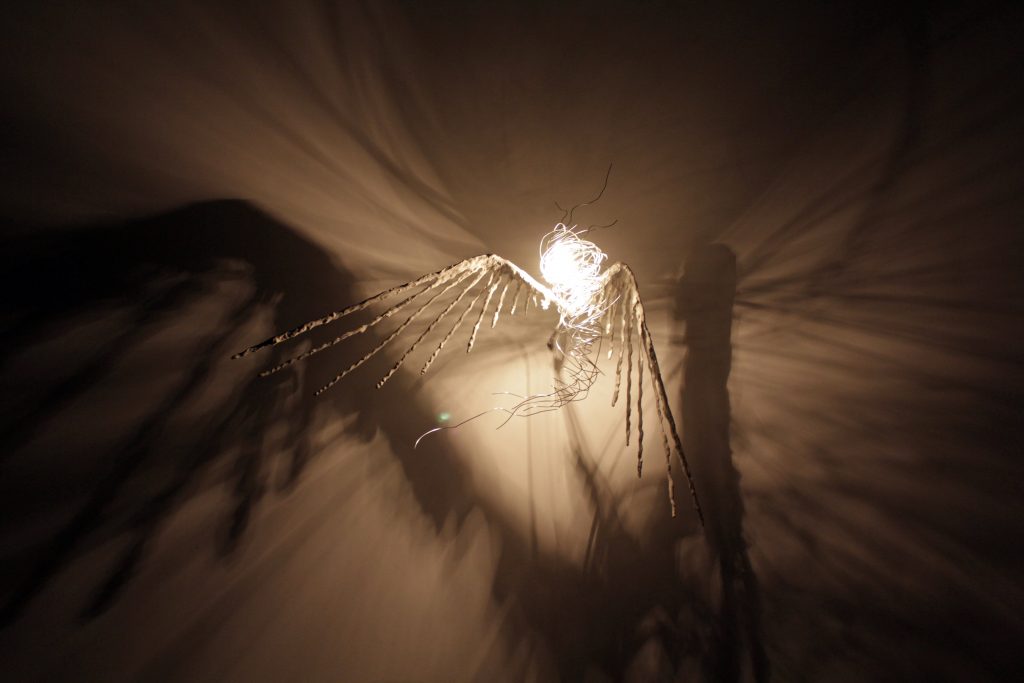Selected Exhibitions
I Dreamed I Was Asleep
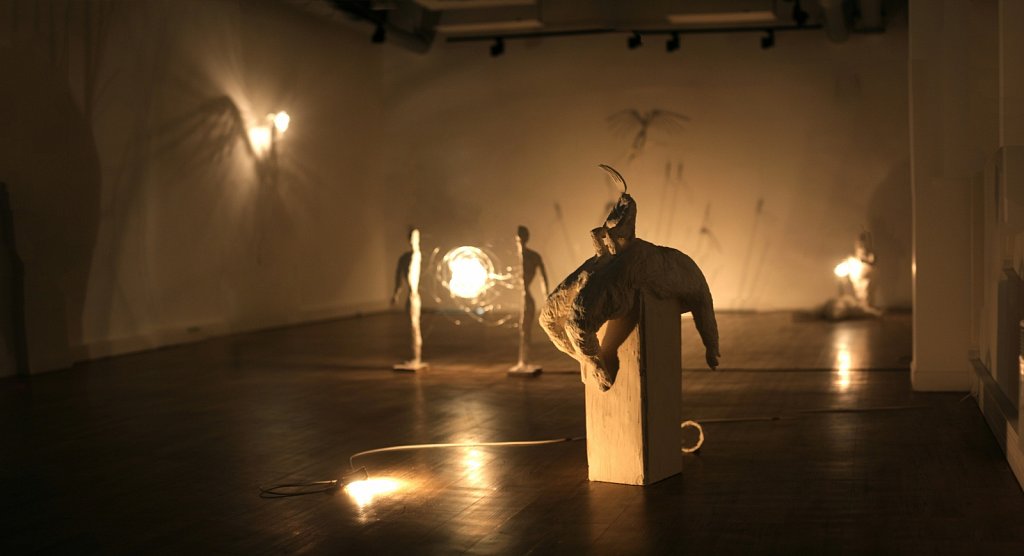
From the exhibition mediation:
I Dreamed I Was Asleep marks the first solo show by Iranian artist Habib Saher (born 1986 in Tehran, Iran) in Paris. The exhibition showcases a new series of paintings and sculptures that consider the artist’s conflicting relationship with mortality and afterlife. Saher’s reflections and questionings on these concepts are fueled by his upbringing in the religious environment of Iran and his contrasting leftist political and philosophical ideas. The fragile materiality of the artworks created with plaster and wire, as well as the artist’s unique representation of the human form, convey a feeling of decay and finitude that is very characteristic of Saher’s work. The title of the exhibition, I Dreamed I Was Asleep, comes from the artist’s treatment of the afterlife as if it were an everlasting bad dream, and the idea that, what we believe to be reality, may not be real at all.
The exhibition opens onto a dark room, showcasing seven of the artist’s latest sculptures and paintings. Each artwork has its own lighting mechanism, creating a dramatic nightmare-like atmosphere within the exhibition space.
The limited color palette and scribbled text in, Resist the Death (2017), contributes to the painting’s mysterious and suggestive forms. The juxtaposition of a dark abstract form and what seem to be angel’s wings, hints a duality between good and evil within the soul awaiting its final destiny.
In The Cycle (2017), two roughly represented human forms of a corpse and what appears to be a king, suggests the inevitability of the cycle of life. Why are our decisions and power important while living if we are all equally powerless against death?
It is through the sensorial and intellectual experience of not only appreciating the artworks conforming the show but also of moving within the dim lit space, that the artist’s conception of the afterlife is portrayed; a dream of being asleep.
Waiting for Godot
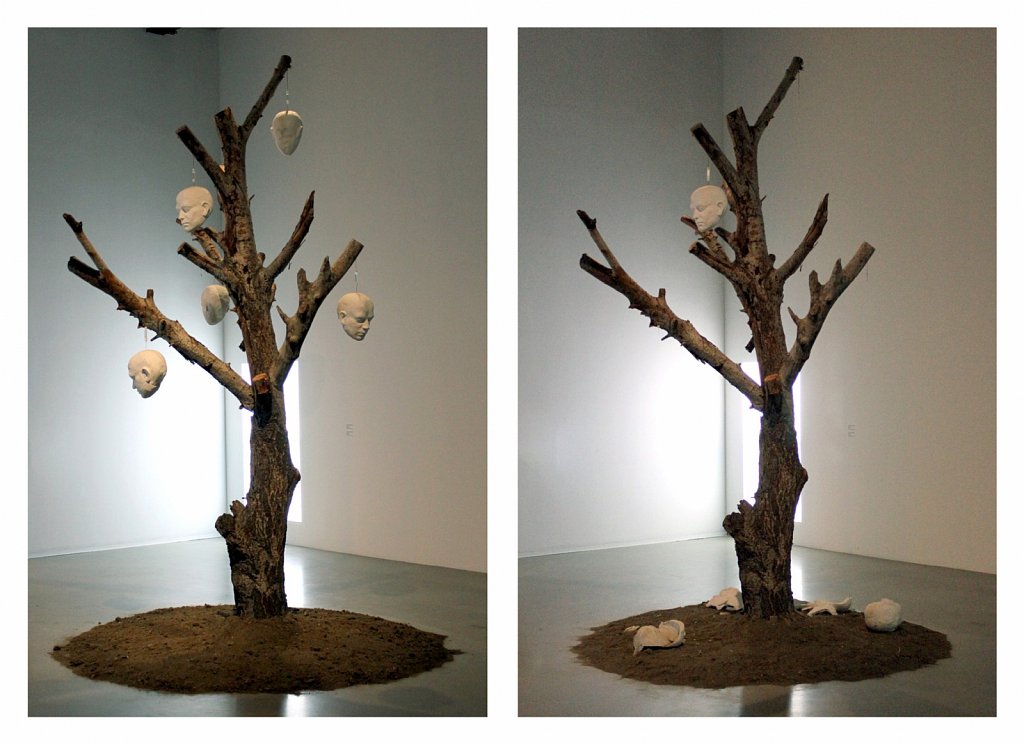
Waiting for Godot is an installation as a part of the exhibition “300 Words On Resistance” which took place in Yarat Contemporary Art Space in Baku, Azerbaijan, 2016
Concept:
We are all going to leave this world one day. There are things which are unpleasant for almost everybody to think about such as the truth that everybody we know and love is eventually going to die one day; or that we will probably face our parents and grandparents pass away some day in future. These truths are always around but we usually try to chase these thoughts away. The installation muses on the subject of loss and consists of a tree in the center with several portraits made of hollow plaster forms hung from its branches. Each of the portraits are hung with metal wires that go through small glass pipes. These pipes are sealed on both ends and contains exact amount of acid that is needed to corrode the metal wire within a time period between 1 to 3 weeks. When the acid weakens the metal wire to the level it can’t handle the weight of the portrait, the wire breaks and causes the portrait to fall and break into pieces. In the end all the portraits will be laying on the ground in pieces. This installation is a small reminder for us to appreciate the presence of our loved ones while we all have the opportunity to still be together.
This Too Shall Pass Solo Exhibition of Habib Saher in Baku, Azerbaijan
This exhibition was my solo show in Artim Contemporary Art Space which took place in Baku, Azerbaijan, 2016. More info
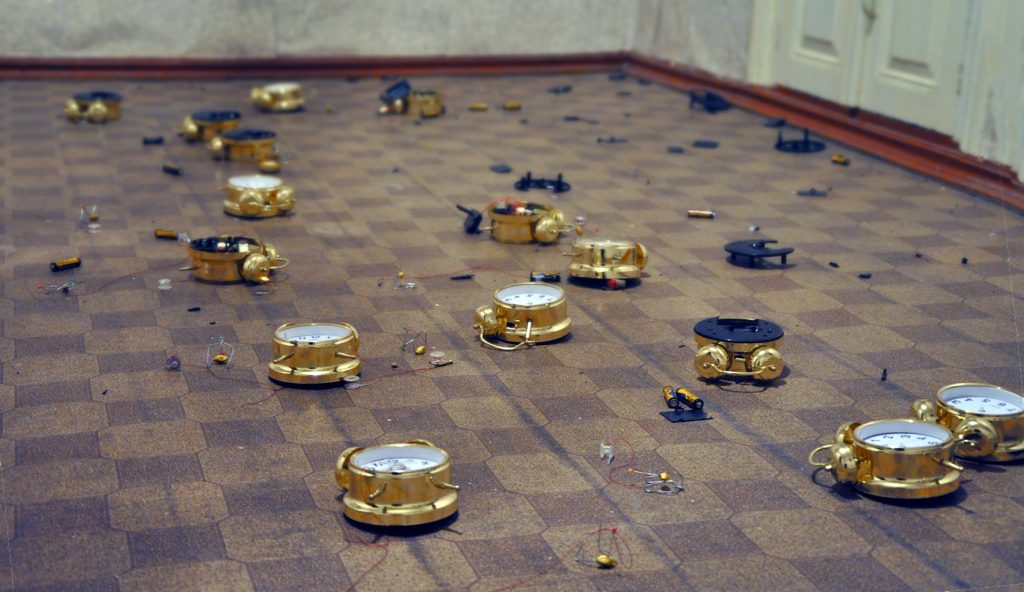
Concept:
I have always been fascinated to see the Buddhist monks of Tibet spend months of work in their temples for drawing a big and complicated colorful painting made of colored sand on the ground and at the end destroy it often by opening the doors and windows for the wind to swipe away months of their work as a symbol of the Buddhist doctrinal belief in the transitory nature of material life. The initial sparkle of these series was born in my mind when I watched a documentary on how artworks of Banksy are being ripped o along with the wall to be sold in auctions, which is totally counter to the spirit this artist created them for. Art is meant to be an experience not a product. So I decided to make some artwork which is only an experience and cannot be turned to a product later and also symbolizing mortality of the nature at the same time. I began working on works which will self-destruct by the end of their exhibiting period. So all the works exhibited will have their own life span. They will live and die during the time that is meant for them to be exhibited. The spirit of the works are based on my all-time thoughts about our existence and our relation with the time. That how we are gifted our times on earth and how should we evaluate it. I can say that this exhibition is a great representation of my thoughts, ideas and worries about the existence, the time and the being.
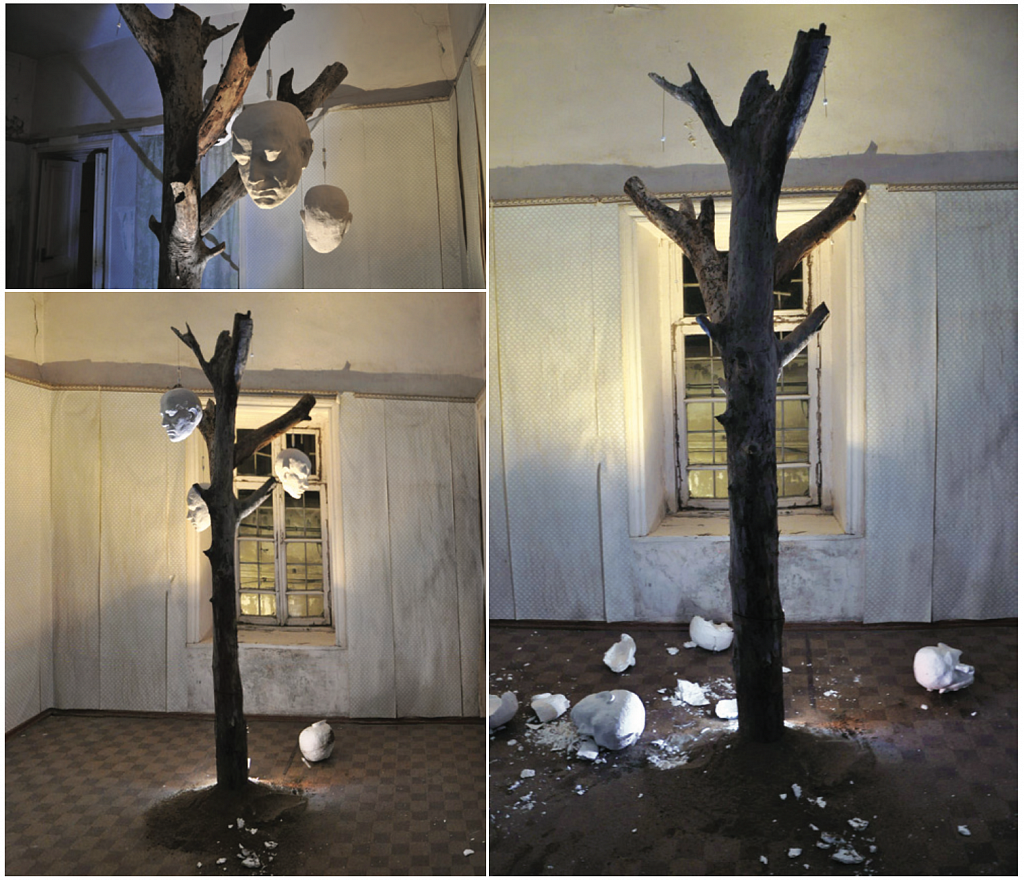
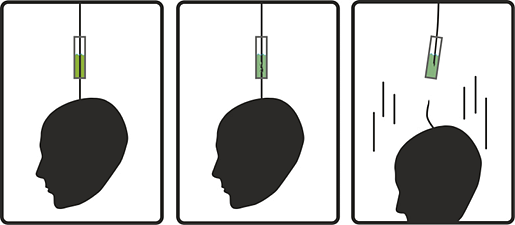
The installation muses on the subject of loss and consists of a tree in the center with several portraits made of hollow plaster forms hung from its branches. Each of the portraits are hung with metal wires that go through small glass pipes. These pipes are sealed on both ends and contains exact amount of acid that is needed to corrode the metal wire within a time period between 1 to 3 weeks. When the acid weakens the metal wire to the level it can’t handle the weight of the portrait, the wire breaks and causes the portrait to fall and break into pieces. In the end all the portraits will be laying on the ground in pieces.
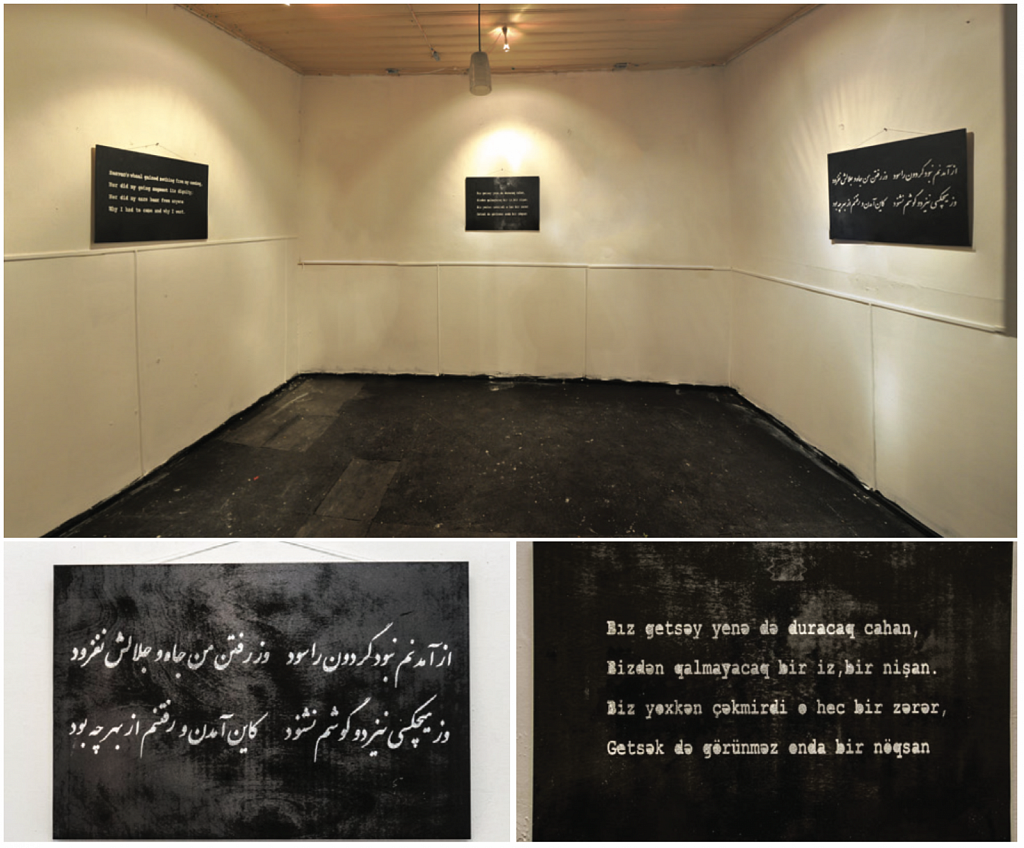
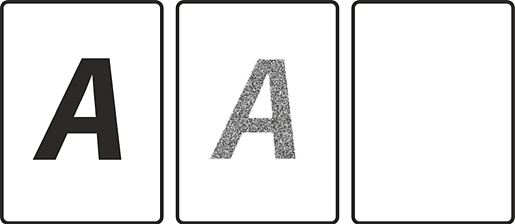
The humankind always dreams of immortality. We carve our names on stones as testaments of our existence, when these rocks turn into the same dust as their inscribers. For we were made from dust, and to dust we shall return. This work consists of a big black board mounted onto the wall. On this board a poem by Omar Khayyam is written using naphthalene. Naphthalene is a chemical substance that slowly evaporates from solid form into gas through time. It will take around 5 to 6 weeks for the poem to disappear.
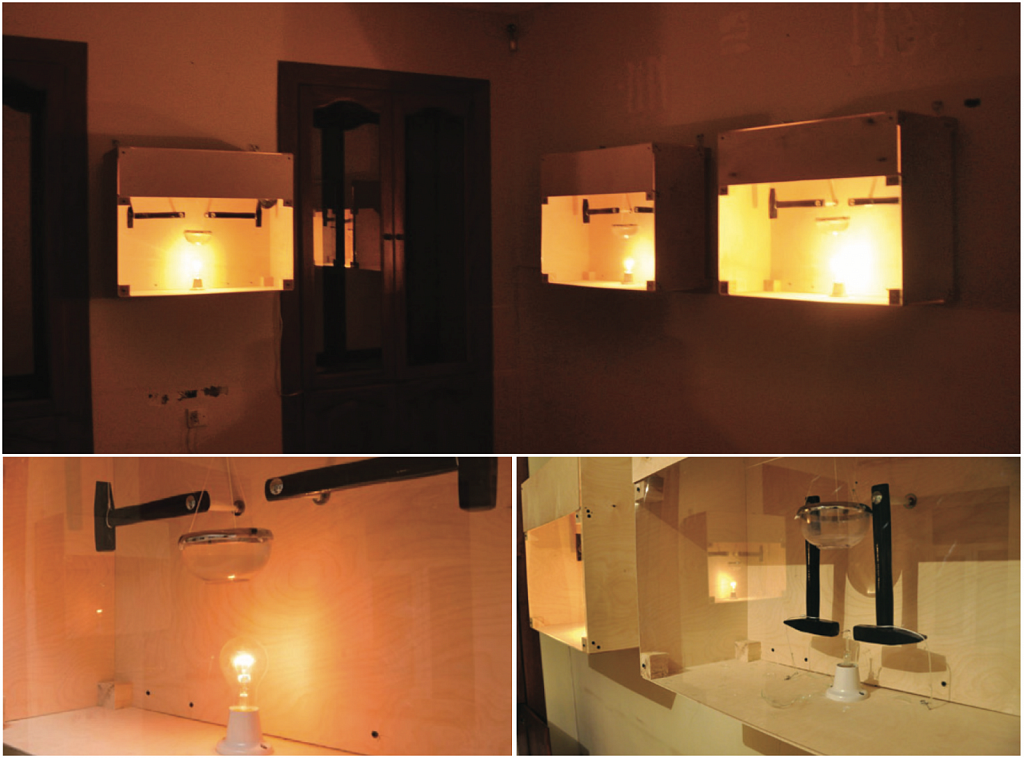
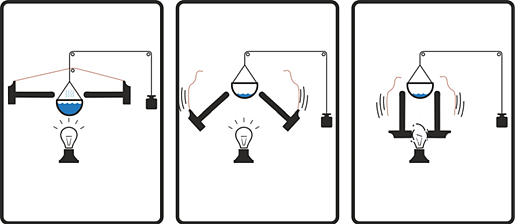
The incandescent light bulbs convert less than 5% of the energy they use into visible light; remaining energy is converted into heat. In this installation, three lamps of different voltages are placed inside separate boxes. Over each of the lamps there is a container filled with water that weighs the same as the two hammers fixed on each side of the scales. During the exhibition, the heat of the lamps will slowly steam the water away. This process will eventually trigger the mechanism which will release two hammers from each side breaking the lamp. The brighter the lamp is, the faster it gets crashed.
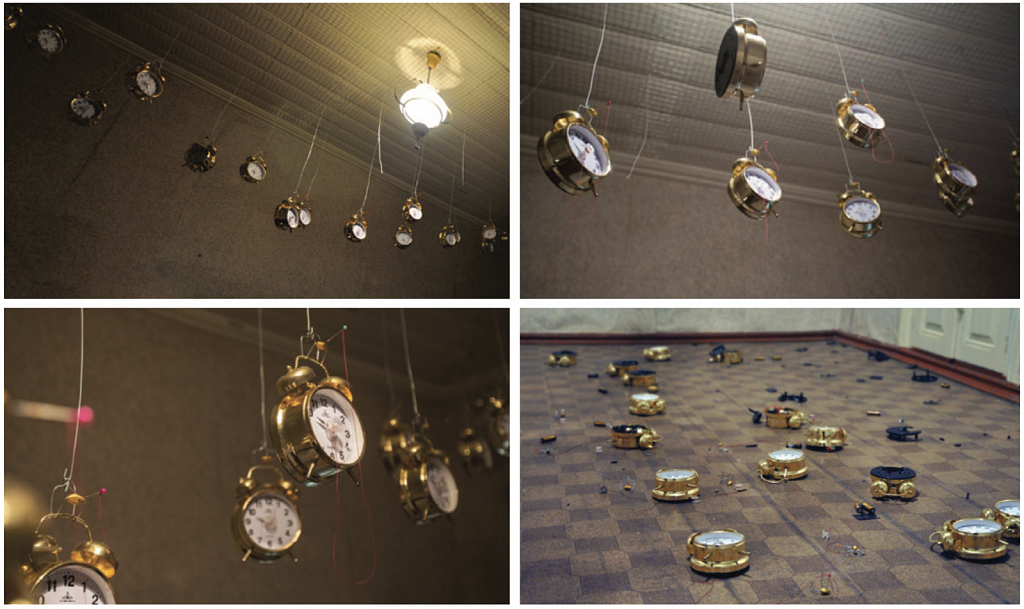
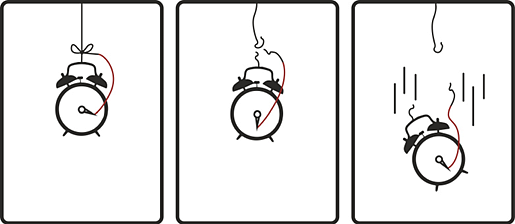
A clock is condemned to only one function – to be an intermediary between time and people. The nature of a clock is to show time in an exact and steady advancement; and if we take this away we devoid the clock of its prime function and the object is no longer a clock. In this installation the above-mentioned nature of the clock is used against itself. Several clocks are attached to the ceiling with spools fixed to the hour arrows of the clocks. These spools turn 720 degrees every 24 hours along with the clock handle, and slowly roll up the thread around. When all of the thread is rolled up, the pin holding the clock will be pulled which will cause the clock to fall from the ceiling and break. The fate of the clock is to die because of its sole nature of being a clock. As time will pass the clocks fixed to the ceiling will fall down and break one by one and at the end of the exhibition none of the clocks remains on the ceiling.
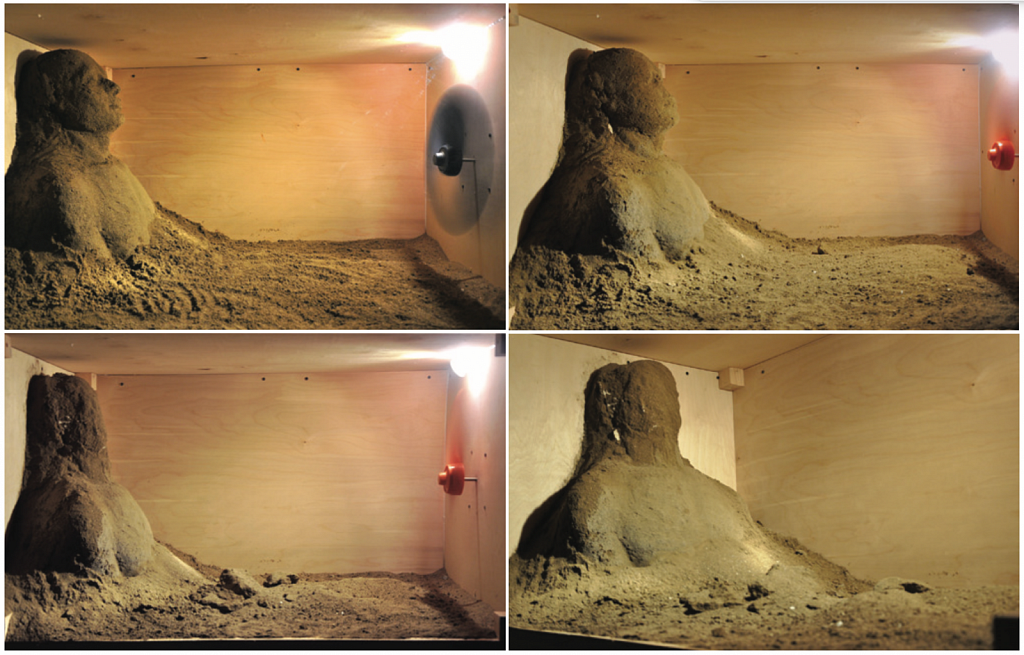
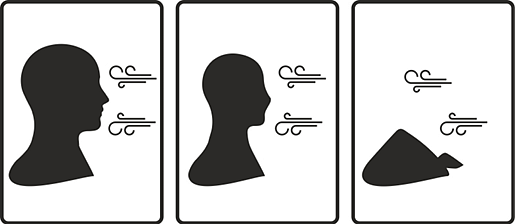
Nothing is eternal; rocks and mountains, continents, planets and even atoms will all be gone one day. Everything is slowly washed away by the passage of time. The next work consists of a symbolic bust of a human made of hardened sand placed in a box. A fan is built into the structure of the box so that the spinner creates an artificial wind. The friction swirls the sand against the sculpture and gradually begins to sand it away. The fan will be working non-stop till the end of the exhibition until there is nothing left from the sculpture, as it will be turned back into sand.
Origin exhibition
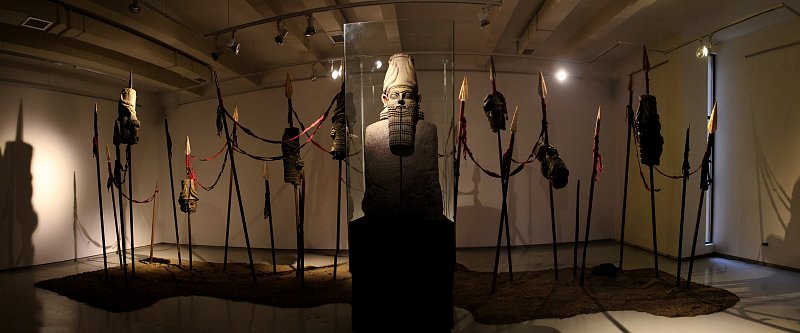
Origin was the title of an exhibition together with Elvin Nabizade which took place in Kichik Qalart gallery, Baku, Azerbaijan, 2014
Concept:
A totem in a glass aquarium. And oil is owing out of his mouth, slowly filling up the aquarium, to drown the totem itself. A symbol to the Middle East, full of oil, blessure of gods, but this oil is like a curse, bringing wars and dictatorship to this region. Bless of the totem is drowning himself slowly.
Oil has always been the biggest bless of the Middle East, made this region rich and powerful, but in the same time oil has always brought war and interfere by the powerful countries. Oil, can be the bless of the old gods to this ground, a bless which is slowly drowning this region in wars, blood and dictatorship. People of ancient Middle East believed that their totems with body of lion, ears of bull and three pairs called “Shedu” can protect their lands, but now Shedu is only a symbol of the past glorious empires of the Middle East. Looking at these totems people remember the gold epoch of their lands, a period which they are proud of, but what is remaining from that period in the reality? Endless wars, crisis, separation and endless blood owing… Glory is in the past and the only thing remaining are the totems. These people live in some kind of the mental prison of the past, they try not to see how they have lost the past while Shedus were not able to save them. These artworks are about the old totems in the modern world, their destiny and the destiny of their lands.
